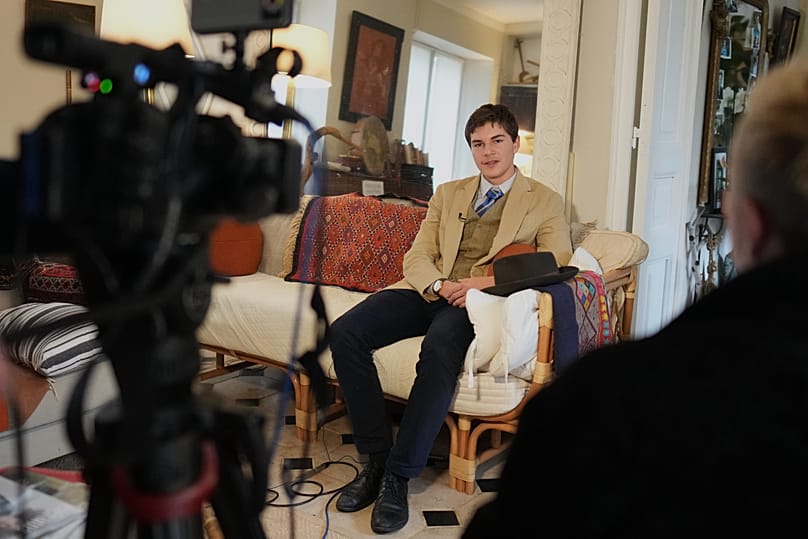
A mystery that has kept millions around the world guessing for weeks has now been solved by the person at the very heart of the question: Who’s that guy?
Pedro Elias Garzon Delvaux is the fedora-hat wearing 15-year-old spotted leaving the Louvre shortly after what’s been described as the heist of the decade.
The Colombian teenager discovered that a photo of himself taken by the Associated Press after the startling news of the theft of France’s Crown Jewels emerged and spread worldwide.
But rather than reveal his identity online, he decided to keep the secret.
A fan of Sherlock Holmes andHercule Poirot, who lives with his parents and grandfather in Rambouillet, 30 kilometres from Paris, he chose to remain silent and follow the global thriller as theories grew about the enigmatic ‘man in the Fedora’.
As online chatter swirled around the smartly dressed stranger – whether he was a detective or an AI-generated fake image – Delvaux decided to keep his counsel: “I didn’t immediately want to say it was me… With this photo there’s a mystery, so you have to make it last.”
In his only in-person interview since the snapshot made him an international curiosity, he appeared before the cameras just as he did that Sunday: wearing a Fedora hat, Yves Saint Laurent waistcoat borrowed from his father, a jacket chosen by his mother, a sharp but badly adjusted tie, Tommy Hilfiger trousers and a restored Russian watch.

The image that catapulted him to fame was intended to document a crime scene: three policemen leaning against a car blocking an entrance to the Louvre, hours after the robbery.
On the right, a lone figure in a three-piece suit walks past, a flash of film noir in a modern-day manhunt. The internet did the rest: “The Fedora Man”, as users called him, was presented as a detective, an infiltrator or even a script-device for a Netflix series about the daring raid.
The truth, however, was much simpler. Peter, his mother and grandfather had been visiting the museum.
“We wanted to go to the Louvre, but it was closed,” Delvaux said. They didn’t know there was a robbery; they asked the policemen why the doors were locked and seconds later AP photographer Thibault Camus took a picture of Peter as he passed by.
“When the picture was taken, I didn’t know,” Delvaux added. “I was just passing by.” Days later he got messages and screenshots: “There were five million views,” he said, and commented with surprise that “people were saying, ‘You’ve become a star.

Clothes maketh the man
His choice of clothing that day was not by accident. Delvaux began dressing like this less than a year ago, inspired by 20th century historyand fictional detectives. “I like to be stylish,” he said.
The teenager goes to school similarly suited and the Fedora is a ritual reserved for weekends, holidays and museum visits. Even at his non-uniform school his influence is already beginning to show: “One of my friends came in this week wearing a tie”, added Delvaux.
He understands why a detective character was projected for him. The Fedora, bowed in a certain way, is his homage to the French Resistance hero Jean Moulin.
Raised in an environment where art is part of everyday life: his mother, Félicité Garzón Delvaux, grew up in an 18th century museum-palace and often took him to exhibitions.
Recognising the power of the image, Delvaux stayed silent for several days and then changed his Instagram from private to public: “People had to try to discover who I am,” he said.
As for what comes next? Fame and, perhaps fortune. “I’m waiting for people to contact me for films,” he said, smiling. Amid the robbery and security breaches, “the man in the Fedora” became a worldwide symbol: “I’m a star,” he said, adding that he will continue to dress like that because it’s his style.